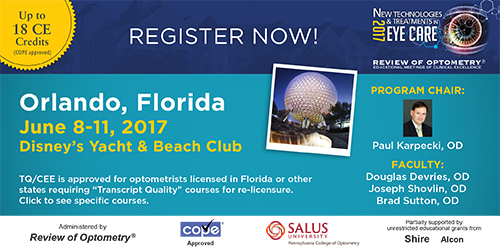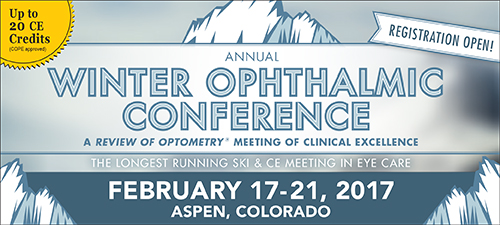
A
weekly e-journal by Art Epstein, OD, FAAO
|
||||||||||||||||||||||||||||||||||||||||||||||
Off the Cuff: Role Models
The passing of Harue Marsden, a dedicated, respected and well-liked professor, got me thinking about teachers and role models. We all have them, yet I suspect few of our role models know of the influence they have had on our careers. I knew relatively little about optometry when I began my first year at SUNY. Optometric practice was very different than it is today. Yet, even with the profession’s limited scope, I knew early on that I wanted my own practice. I also knew that one day, optometry would be very different than it was then. Looking back at my budding professional career, a young OD who joined SUNY’s faculty in my second year stands out as one of my most important role models. Stuart Podell was the epitome of clinical expertise, doctorly kindness and caring, and unbridled enthusiasm for our profession. Because of Stu, I knew I had made the right decision about optometry and whom I wanted to be like. Years later, I travelled to Israel with Stu and Loretta Szczotka for a lecture series he had arranged. Although I’ve travelled around the world several times since, memories of that trip are perhaps my most precious. Sitting in a Jerusalem café with him watching a rarely seen snowstorm, his sage advice reset the course of my career. I still have a vivid image of us unwisely walking down a street in the old city of Hebron, Stu wearing his NY Yankees cap, followed closely by several very nervous, heavily armed Israeli soldiers and an armored vehicle.
|
|||||
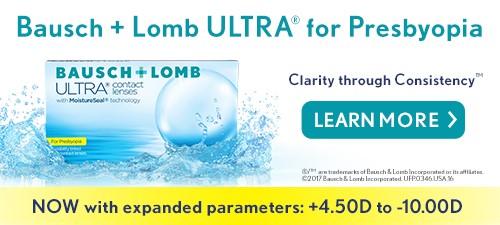 |
||
| Ganglion Cell Function Measured By ERG After IOP Reduction in POAG | ||||
This study evaluated retinal ganglion cell (RGC) function after intraocular pressure (IOP) reduction measured by pattern electroretinogram (PERG) in patients with newly diagnosed, non-treated preperimetric and early stages of primary open-angle glaucoma (POAG). Twenty-four eyes from 24 patients with POAG were included: 11 eyes with preperimetric glaucoma and 13 eyes with early glaucoma received Ganfort (bimatoprost and timolol) once a day for a period of one month. Before and after the treatment, the following measurements were analyzed: IOP, mean ocular perfusion pressure (MOPP), peak time of P50, and amplitude of P50 and N95 waves in PERG (ISCEV standard 2012). Correlations between PERG P50 and N95 waves, IOP and MOPP were calculated.
After therapy, IOP significantly decreased in all eyes, on average 31%. A significant increase in MOPP in all eyes of on average 14% was detected. PERG amplitude of P50 and N95 waves increased in 75% and 79% eyes, respectively, and on average by 28% for P50 and 38% for N95. There were no significant interactions between the change of PERG parameters in time and stage of glaucoma. Researchers concluded that significant IOP-lowering therapy could improve RGC function measured by PERG in patients with preperimetric and early stages of POAG. |
||||
SOURCE: Karaśkiewicz J, Penkala K, Mularczyk M, et al. Evaluation of retinal ganglion cell function after intraocular pressure reduction measured by pattern electroretinogram in patients with primary open-angle glaucoma. Doc Ophthalmol. 2017; Feb 7. [Epub ahead of print]. |
||||
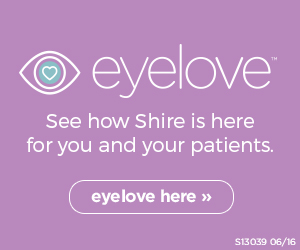 |
||
| Implantation of a Second Glaucoma Drainage Device | ||||
This study evaluated success rates in controlling intraocular pressure (IOP) after implantation of a second glaucoma drainage device (GDD) with a Baerveldt glaucoma implant in patients with refractory glaucoma, with a secondary aim of reducing the need for postoperative glaucoma medications. This retrospective, noncomparative, interventional study included patients undergoing a second GDD for uncontrolled glaucoma from a tertiary care glaucoma service. Data were obtained from the medical records for the preoperative period and after the first, fifteenth and thirtieth day; after three, six and 12 months, and then yearly until the last postoperative visit. Visual acuity, IOP and number of glaucoma medications (NGM) from the follow-up visits were compared to baseline. Success and failure criteria were analyzed based on IOP level or need of glaucoma medications. Forty-nine patients were studied, with a mean follow-up time of 25 ± 21 months. The mean preoperative IOP was 23.7mm Hg ± 8.2mm Hg, and decreased to 14.8mm Hg ± 4.0mm Hg after one year, 14.4mm Hg ± 3.9mm Hg after two years and 16.6mm Hg ± 8.5mm Hg after three years. The mean preoperative NGM was 3.4 ± 1.3 and decreased to 2.0 ± 1.8 after one year, 2.5 ± 1.6 after two years and 2.8 ± 2.0 after three years. Absolute success was 9% after one year for a postoperative IOP between 5mm Hg and 18 mmHg, and 76% for a postoperative IOP between 5mm Hg and 21 mmHg. The qualified success was 88% at the first and second years, and 83% at the third year. With up to three years of follow-up, a second glaucoma drainage device was successful in reducing IOP to below 21 mmHg, but not as successful below 18 mmHg. The success rate was improved with the use of glaucoma medications within three years of follow-up. |
||||
SOURCE: Francis BA, Fernandes RA, Akil H, et al. Implantation of a second glaucoma drainage device. Graefes Arch Clin Exp Ophthalmol. 2017; Feb 7. [Epub ahead of print]. |
||||
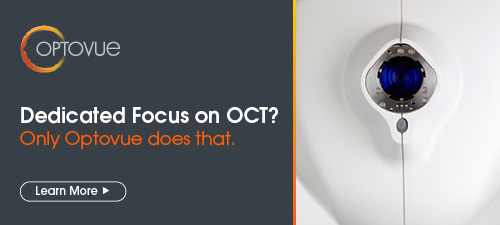 |
||
| Immune Response & Inflammation Mediators in Tears | ||||
This study determined the expression profile of immune response and inflammation (IRI) mediator molecules in tears from patients with dry eye (DE), and those who were suspected of having or who had been diagnosed with primary open-angle glaucoma (POAG) and were receiving treatment, and compared them with healthy controls. This prospective, observational, cohort study included 107 participants, subdivided into: healthy controls (CG; n=30), patients with DE (DEG; n=41), and patients suspected of having or who were diagnosed with POAG and were receiving hypotensive treatment (POAG-G; n=36). Tear samples were collected by capillary to be processed using a multi-immunoassay system based on flow cytometry (Luminex R-200), in order to determine the interleukins (IL): 1β, 2, 4, 5, 6 and 10, and growth factors including tumor necrosis alpha (TNF-α), vascular endothelial (VEGF), and granulocyte macrophage-colony stimulating factor (GM-CSF). Data were processed using the SPSS 20.0 program. Molecules that significantly increased in tears from DEG vs. POAG-G patients were: IL-1, IL-6 and IL-10, whereas VEGF significantly decreased in the DEG. The POAG-G showed significantly higher IL-6 values compared with the CG. When comparing the DEG and POAG-G, significant differences were observed in tear expression of IL-4, IL-6, TNF-α, GM-CSF and VEGF. Investigators wrote that the increased expression of IRI mediators in tears from patients with DE or POAG strongly demonstrated the importance of immune response in both pathologies. They added that the different molecules involved also suggested distinct signaling pathways for these processes that required further research. |
||||
SOURCE: Benitez-Del-Castillo Sánchez J, Morillo-Rojas MD, Galbis-Estrada C, et al. Determination of inmune response and inflammation mediators in tears: Changes in dry eye and glaucoma as compared to healthy controls. Arch Soc Esp Oftalmol. 2017; Feb 3. [Epub ahead of print]. |
||||
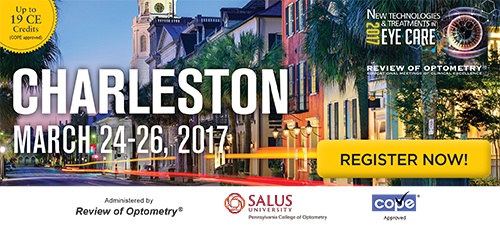 |
||
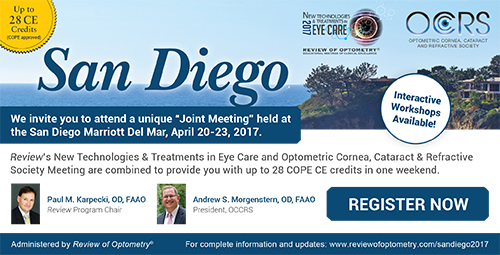 |
||
| News & Notes | |||||||||
| Allergan Launches See America Campaign Allergan’s new initiative, See America, is aimed at making vision health a priority for all Americans, along with increasing awareness of diseases that can cause preventable blindness and helping to improve access to vision care. The launch follows the release of a report published in September 2016 by the National Academies of Sciences, Engineering, and Medicine (NASEM), declaring eye health a public health imperative and recognizing the number of Americans affected by blindness from preventable causes. Through See America, Allergan will partner with Prevent Blindness to champion better access to vision care. During a series of vision-screening events in various cities, sponsored by Allergan, attendees will receive free one-on-one professional eye exams, follow-up treatment plans and education about the most common diseases affecting people's vision. Learn more. |
|||||||||
| Sjögren’s Syndrome Foundation Seeks to Educate Public
With the nineteenth annual Sjögren’s Awareness Month approaching in April, the Sjögren’s Syndrome Foundation is continuing its mission to educate individuals and families about Sjögren’s, as 2.5 million individuals are estimated to be undiagnosed. Each day during Sjögren’s Awareness Month, the Foundation will be using one or more of its social media channels to educate consumers, health care professionals and others by providing facts about the disease, offering resources and sharing stories of those with Sjögren’s. In 2016, the Foundation, with input from hundreds of eye care professionals, developed and published the first U.S Clinical Guidelines for Ocular Management in Sjögren’s Patients to help standardize patient care. Read more. | |||||||||
|
Optometric Physician™ (OP) newsletter is owned and published by Dr. Arthur Epstein. It is distributed by the Review Group, a Division of Jobson Medical Information LLC (JMI), 11 Campus Boulevard, Newtown Square, PA 19073. HOW TO ADVERTISE |


